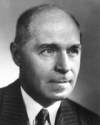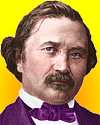 | TODAY IN SCIENCE HISTORY NEWSLETTER - 5 APRIL |
| Feature for Today |
 On 5 Apr 1753, the British Museum was founded by an Act of Parliament granting �20,000 to purchase the 50,000 volume library of Sir Hans Sloane and his vast collection of 69,352 items of nature and art. On 5 Apr 1753, the British Museum was founded by an Act of Parliament granting �20,000 to purchase the 50,000 volume library of Sir Hans Sloane and his vast collection of 69,352 items of nature and art.Montagu House, Bloomsbury, was purchased in 1754 by the government to house this and other collections. Since it opened, on 15 Jan 1759, the Museum has been collecting, conserving and studying millions of artefacts. You can read an historical introduction and description of the building, from the General Guide to the British Museum of Natural History (1898). |
| Book of the Day | |
| |
| Quotations for Today | |
 | "The frequency of disastrous consequences in compound fracture, contrasted with the complete immunity from danger to life or limb in simple fracture, is one of the most striking as well as melancholy facts in surgical practice." |
 | "As science is more and more subject to grave misuse as well as to use for human benefit it has also become the scientist's responsibility to become aware of the social relations and applications of his subject, and to exert his influence in such a direction as will result in the best applications of the findings in his own and related fields. Thus he must help in educating the public, in the broad sense, and this means first educating himself, not only in science but in regard to the great issues confronting mankind today." |
 | "How dare we speak of the laws of chance? Is not chance the antithesis of all law? " |
| QUIZ | |
| Before you look at today's web page, see if you can answer some of these questions about the events that happened on this day. Some of the names are very familiar. Others will likely stump you. Tickle your curiosity with these questions, then check your answers on today's web page. | |
| Births | |
 |  Lawrence Dale Bell, born 5 Apr 1894, was an American aircraft designer and founder of Bell Aircraft Co. In addition to the rocket-propelled experimental X-1 airplane, this firm also produced such significant aviation contributions as the nation's first jet propelled airplane, the world's first commercial helicopter, the world's fastest and highest flying airplane, the Bell X-1A, and the first jet vertical take-off and landing plane. Lawrence Dale Bell, born 5 Apr 1894, was an American aircraft designer and founder of Bell Aircraft Co. In addition to the rocket-propelled experimental X-1 airplane, this firm also produced such significant aviation contributions as the nation's first jet propelled airplane, the world's first commercial helicopter, the world's fastest and highest flying airplane, the Bell X-1A, and the first jet vertical take-off and landing plane.  What did the X-1 aircraft accomplish for the first time? What did the X-1 aircraft accomplish for the first time? |
 |  A British surgeon, born 5 Apr 1827, was the founder of antiseptic medicine and a pioneer in preventive medicine. While his method, based on the use of antiseptics, is no longer employed, his principle - that bacteria must never gain entry to an operation wound - remains the basis of surgery to this day. A British surgeon, born 5 Apr 1827, was the founder of antiseptic medicine and a pioneer in preventive medicine. While his method, based on the use of antiseptics, is no longer employed, his principle - that bacteria must never gain entry to an operation wound - remains the basis of surgery to this day. |
| Deaths | |
 |  The 5th Earl of Carnarvon (George Edward Stanhope Molyneux Herbert) was a British egyptologist (1855-1923). He funded the excavations by HowardCarter which led to a memorable discovery November 1922. The 5th Earl of Carnarvon (George Edward Stanhope Molyneux Herbert) was a British egyptologist (1855-1923). He funded the excavations by HowardCarter which led to a memorable discovery November 1922.  What discovery did his funding make possible? What discovery did his funding make possible? |
 |  Hermann Joseph Muller(1890-1967) investigated mutations and hereditary changes that could be caused in the genes and chromosomes of living cells (first produced in the fruit fly Drosophila in 1927). He was awarded the Nobel Prize for Physiology or Medicine in 1946. Hermann Joseph Muller(1890-1967) investigated mutations and hereditary changes that could be caused in the genes and chromosomes of living cells (first produced in the fruit fly Drosophila in 1927). He was awarded the Nobel Prize for Physiology or Medicine in 1946. |
| Events | |
 |  On 5 Apr of a certain year, Thomas Corwin Mendenhall, then Superintendent of Weights and Measures, with the approval of the Secretary of the Treasury, decided that the International Meter and Kilogram would in the future be regarded as the fundamental standards of length and mass in the United States, both for metric and customary weights and measures. This decision has come to be known as "The Mendenhall Order." On 5 Apr of a certain year, Thomas Corwin Mendenhall, then Superintendent of Weights and Measures, with the approval of the Secretary of the Treasury, decided that the International Meter and Kilogram would in the future be regarded as the fundamental standards of length and mass in the United States, both for metric and customary weights and measures. This decision has come to be known as "The Mendenhall Order."  In which decade was this order published? In which decade was this order published? |
| Answers |
When you have your answers ready to all the questions above, you'll find all the information to check them, and more, on the April 5 web page of Today in Science History. Or, try this link first for just the brief answers. Fast answers for the previous newsletter for April 4: high-voltage direct-current electrical generator; open-hearth steel-making; John Napier; the British Naval research vessel HMS Challenger that sailed the Atlantic and Pacific oceans during the 1870's; vitamin C. |
| Feedback |
 If you enjoy this newsletter, the website, or wish to offer encouragement or ideas, please send feedback by using your mail reader Reply button. If you enjoy this newsletter, the website, or wish to offer encouragement or ideas, please send feedback by using your mail reader Reply button. |
--
If you do not want to receive any more newsletters, Unsubscribe
To update your preferences and to unsubscribe visit this link



Δεν υπάρχουν σχόλια:
Δημοσίευση σχολίου